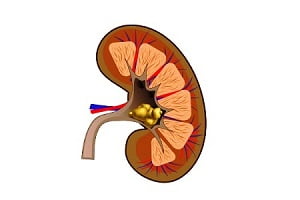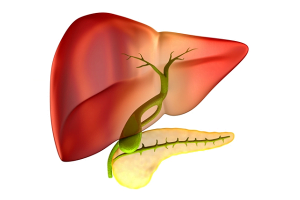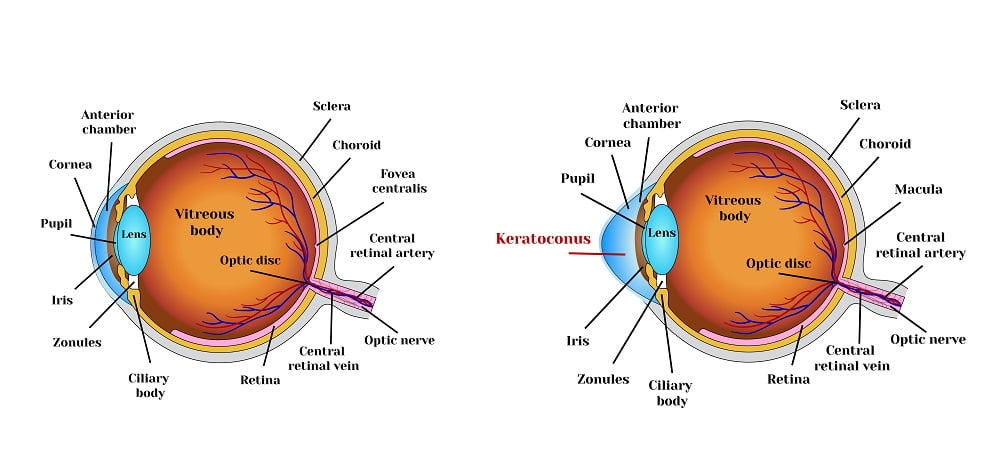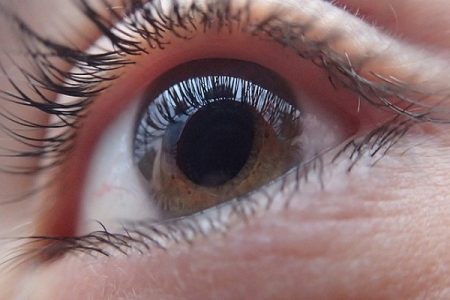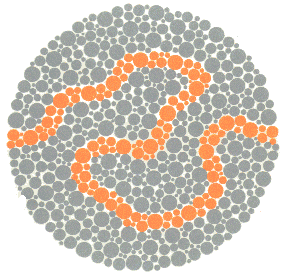An inability to see colors normally is called color blindness. People suffering from color blindness are unable to differentiate colors appropriately. Colorblind people usually have difficulty in distinguishing certain specific colors, especially green, red, and rarely blue.
A defect in the functioning of one or more cone cells, absence of cone cells, or cone cells detecting a different color than normal are factors responsible for color blindness.
Tritanomaly is a rare condition found in people who have reduced sensitivity to blue light.
Blue Cone Monochromacy
Blue cone monochromatism is an inherited eye disorder affecting the cones responsible for color vision, specifically red, green, and blue. It is a rare condition but more severe color blindness characterized by poor visual acuity and severely low color vision. Affected individuals show many symptoms like myopia, nystagmus, photophobia, etc. Blue cone monochromacy is sometimes considered as a form of another condition called achromatopsia. Achromatopsia is a form of color blindness characterized by either partial or complete loss of color vision followed by some other vision-related issues. Blue cone monochromacy is rarest among all types of color blindness and affects almost 1 in 100,000 people globally. It has been found that blue monochromacy affects males more often compared to females.
What Do Blue Purple Color Blind People See?
People suffering from blue purple color blindness are unable to distinguish blue and purple associated colors. It is difficult for them to say whether a color is blue or purple. This condition is mainly caused due to the improper functioning of cone cells of the retina. Blue cone monochromacy is one example where people have difficulty perceiving blue and the associated colors. Such people have only one cone cell that contains functional photoreceptor cells. Due to only one working cone cell, people with blue monochromacy are unable to distinguish between specific colors and mostly see grey colors.
Blue cone defect
Cones present in the retina are responsible for your ‘color vision’. Cones have photo-pigments which are responsible to visualize all possible colors. If any problem or defect occurs with these pigments, it might lead to color vision deficiency or color blindness. Cone cells are basically of three types and each cone cell has a different sensitivity to light wavelengths. One type of cone perceives red light, another perceives green and the third perceives blue. When all the three cones – red, green and blue work together, they allow you to see the whole spectrum of colors.
If the blue cone photo-pigments are either missing or are not working correctly, it might lead to defects in vision associated with blue color. If blue cones work partially, the blue color may appear as green, pink may appear as red, etc. This condition is known as tritanomaly. If the blue cones cells are absent and blue may appear as green and yellow looks light gray or violet. This condition is known as tritanopia and it is very rare. Blue- type color blindness, in maximum cases, is supposed to be inherited. When the red and blue cones work in a certain way, purple color is generated. If a defect occurs in the blue cone, blue and purple color vision is lost.
Is there a blue purple color blind test?
There is no specific blue purple color blind test but some tests are mentioned below which are found useful in detecting or identifying defects related to blue and purple hues. A person who feels that he or she has problem in perceiving shades of blue and purple should visit an ophthalmologist.
Quantitative tests are mainly used to analyze the degree of color blindness and ability to accurately perceive colors or identify gradations of color. Colored plates, numbered plates, etc are used to evaluate the degree and type of color blindness.
To determine whether a person is color blind for not, there are four main diagnostic tests, namely:
- Ishihara 38 Plates Test
- F-M 100 Hue Test
- Color Arrangement Test
- RGB Anomaloscope

Image credit: Wikimedia
For example, the above given image portraits 2 different colors: blue and purple. People who are colorblind have difficulty in distinguishing between these colors. To the patients, these colors may appear as shades of gray, green or even yellow.
People with deuteranomaly, protanomaly might get confused with different types of blue and purple hues. It is also observed that people suffering from dichromacy, i.e. presence of only two types of cones and total absence of function of one cone type (blue), have confusion with some blues with some purples and also struggle to identify pale shades of most colors.
Several people also take online tests to self detect the problem in their vision before their visit to a doctor. Specialized glasses and tinted lenses help to normalize color vision deficiency.
